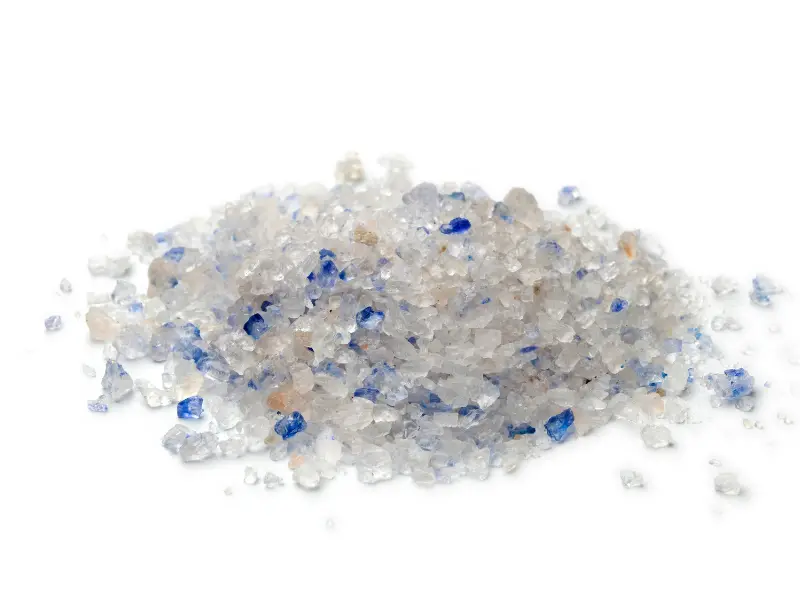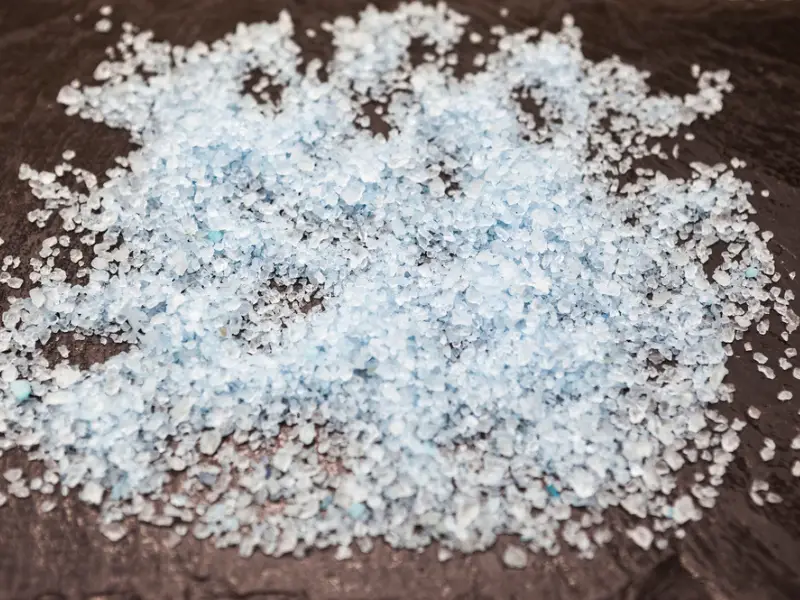Since ancient times, Persian blue salt has had an essential role in the food world and is now one of the world’s most unusual salts. This salt’s unique color and taste have allowed it to be used for cooking and table finishing.
Today, people still use it for its culinary benefits and its natural qualities that provide health benefits such as reducing stress, increasing blood circulation, and encouraging restful sleep. It is also a proven mineral-rich product good for teeth and muscular fatigue relief.

In recent years, many chefs have recognized Persian blue salt worldwide and are using it to enhance their cooking experiences. This article will discuss several of its culinary uses and its top benefits and advantages.
What Is Persian Blue Salt?
Persian blue salt is a one-of-a-kind product found solely in northern Iran solely in salt mines. This Persian salt is edible and also has medicinal properties. Due to natural amounts of potassium, iron, and calcium, this salt is one of the most expensive in the world as it is one of the worlds rarest salts.
One cause for the blue color of every salt crystal is light refraction and its minerals. The blue hue occurred because of the high pressure under which the salt was created millions of years ago. It also comes from Precambrian seas that dried up several million years ago, hence it’s pollution free.
Origin of Persian Blue Salt
Iran is one of the few producers of Persian blue salt. They extract it from underground salt deposits in the Dascht-e Lut desert in the northern province of Semnan.
The place is one of the hottest places on the planet, with temperatures averaging between 122 and 140 degrees Fahrenheit. The highest-ever ground temperature of 159° was also recorded here.
Persian Blue Salt and Commercial Table Salt
Blue salt is scarce and, as a result, far more expensive than regular salt. It does not occur in massive slabs but rather in around 20 to 30-cm wide bands.

These thin layers were formed millions of years ago due to the pressure and tectonic motion of the earth’s plates. Due to the structure of the salt’s crystal, it bents the light which would seem blue to the spectator. Additionally, these changes might result in yellow, pink, grey, and white hues.
The extraction of blue salt is significantly more complex than the extraction of ordinary salt. It takes around 220 pounds of rock salt to tear down one kilogram of blue salt.
Taste of Persian Blue Salt
Persian Blue Salt is made from a rich taste, strong flavor, and distinctive color. This unique salt can be seasoned, but its deep blue appearance and nutty flavor lend themselves to being used as a finishing salt after cooking.
The taste of Persian Blue Salt is typically quite salty with a characteristic of a mild aftertaste, which blends well with other condiments such as curry or hot sauce.

Blue salt is an excellent salt for aesthetic effects. Whether used as a finishing salt or served in a glass jar or salt mill, this salt is sure to enhance the aesthetic of the food.
Persian Blue Salt Properties
Potassium
Potassium is the molding element found in blue salt. Blue salt’s potassium content promotes blood circulation while calming the mind and reducing stress.
Iron
As previously stated, one of the variables affecting the color of this salt is the presence of iron. The addition of iron to this salt has enhanced its nutritional benefits.
Magnesium
Due to the presence of this mineral in blue salt rock, it is suitable for tooth maintenance and muscular fatigue relief.
Calcium
Blue salt is exceptionally high in calcium. Calcium helps children’s bones develop stronger and encourages healthy growth.
How To Find Natural Persian Blue Salt
The blue tint of the crystals in this salt adds to its unique appearance. The large individual crystals of Persian blue salt cannot be colored; they will not look like the original ones. However, some individuals may embellish the salt after being pounded into salt grains and sell it as Persia blue salt.
Here’s how you can detect a real Persian blue salt.
- Big crystals of salt must have dark blue veins inside them.
- When Persian blue salt is ground, the salt grains will appear white. The blue hue will only be present in the larger crystals.
- Blue salt crystals do not have a blue tint on their surface. It has a translucent appearance, with blue veins running through the crystals.

Conclusion
While the methods listed above can identify a fake Persian blue salt, finding the genuine one is not as simple and cannot be performed by everyone.
The most excellent approach to ensure that you consume genuine Persian blue salt is to go for a reputable brand. Just make sure that the wholesaler is also the miner. This ensures the highest quality at the lowest possible price, as an intermediary would increase the consumer’s cost.
I hope you have found this article about Persian blue salt useful. You might not know it yet, but Persian blue salt is the only natural source of sodium nitrate that does not harm agricultural land, aquifers, or waterways. It also doesn’t use chlorides to produce nitrogen oxides that are harmful to the environment. Because of these facts, Persian blue salt is a great sustainable choice for your food seasoning needs.
The benefits of living sustainably and keeping the environment healthy cannot be overstated. Learn how to live a sustainable lifestyle with our informative guides below.


Do you mind if I quote a couple of your articles as long asI provide credit and sources back to your website?My blog site is in the very same niche as yours and my users would certainly benefit from some of the information you present here.Please let me know if this okay with you. Thanks!